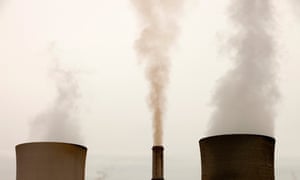Extract from The Guardian
Green finance experts say Australia is out of step with World Bank,
Europe and the US, which are using funding to combat global warming
Australia is the only developed country that allows climate change
funding to be used to upgrade coal-fired power plants, green finance
experts say.
Experts say allowing Vales Point coal-fired power station to register with the Morrison government’s emissions reduction fund, rebadged this week as a “climate solutions” policy, puts Australia out of step with the World Bank, Europe and the US, which have all rejected using climate financing for coal power retrofits.
The World Bank has issued US$13bn in green bonds since 2008 to stimulate spending to combat global warming.
China has used green bonds to help build new coal-fired plants to
replace older, dirtier stations on the grounds it reduces nitrogen-based
emissions causing the country’s oppressive air pollution. But it announced in December
it would no longer consider “clean coal” plants – which still emit
significant amounts of greenhouse gas – investments in green technology.Experts say allowing Vales Point coal-fired power station to register with the Morrison government’s emissions reduction fund, rebadged this week as a “climate solutions” policy, puts Australia out of step with the World Bank, Europe and the US, which have all rejected using climate financing for coal power retrofits.
The World Bank has issued US$13bn in green bonds since 2008 to stimulate spending to combat global warming.
Sean Kidney, chief executive of the London-based Climate Bonds Initiative, says China’s shift leaves Australia out on its own.
Emma Herd, chief executive of the Investor Group on Climate Change, says Australia is moving across the trend by considering giving taxpayer support to coal. In addition to the potential support through the climate solutions fund, the government is considering underwriting the cost of building new coal-fired power stations.
In the past fortnight, mining giant Glencore has said it will cap coal production in response to pressure from shareholders, while Rio Tinto stressed it was the only large mining company with no fossil fuel investments, having sold its final coal assets to Glencore last year.
"From an investor’s perspective, coal is a dead duck"
“At a time when private-sector capital is increasingly looking for low carbon and decarbonisation opportunities, it would seem to be swimming against the tide to put government taxpayer funding into these [coal] activities,” Herd says.
Last year the Intergovernmental Panel on Climate Change said that limiting global warming to 1.5C – a goal referenced in the Paris climate agreement – would require coal use for energy to fall 59-78% below 2010 levels by 2030.
While global markets increasingly recognise a decline in coal use is inevitable, the shift away from it has been fitful. The Global Carbon Project found global emissions were likely to have hit a new high in 2018, in part due to an increase in coal burning in China. It bucked a global decline in emissions from coal in 2015 and 2016.
Though it has been registered, Vales Point coal plant is yet to bid for money from the emissions reduction fund due to a dispute over whether it needs to reduce its carbon intensity to less than the grid average to win a government contract. The plant’s owners say the project would reduce emissions by 900,000 tonnes across a decade, equivalent to about 1.3% of the plant’s emissions over that time.
Even if Vales Point is not successful, critics such as the Australian Conservation Foundation say there is nothing preventing other coal-fired plant owners from applying for a climate subsidy. Major companies are being paid from the fund for other fossil fuel projects: South African miner Gold Fields is getting $1m for a gas-fired plant the company says it would have built regardless; Rio Tinto has received $2m for a diesel-fired power plant at a bauxite mine.
With prime minister Scott Morrison announcing the Coalition would top up the $2.55bn fund with an additional $2bn over a decade, economists and environmentalists have called for emissions from fossil fuels to be dealt with through different policies and for the fund to focus on projects that restore or protect natural habitat.
Experts say the scheme will be improved if the government tightens the safeguard mechanism, a policy that was promised to limit emissions from big industry but which has largely allowed major companies to nominate their own pollution.
National emissions have increased each year since the emissions reduction fund replaced the abolished carbon price scheme in 2014. Money from the fund is distributed via reverse auction, with land owners and businesses bidding for contracts to reduce emissions cheaply.
Analyses have found some projects under the fund have merit but it is difficult to know what taxpayers are getting for their money. Some methodologies paid for cuts that would have happened anyway. Others have had any cuts more than wiped out by increases in pollution allowed elsewhere.

No comments:
Post a Comment